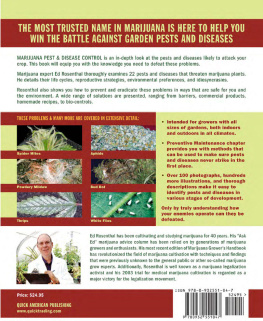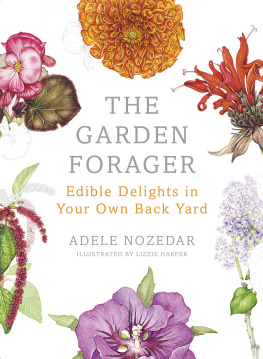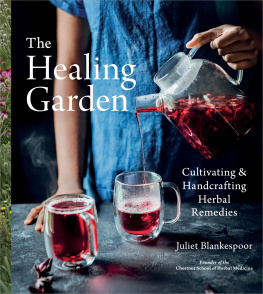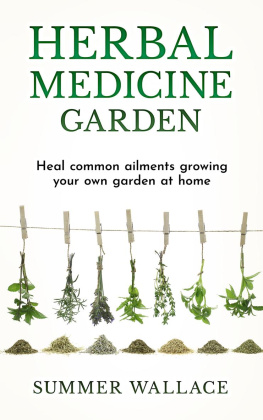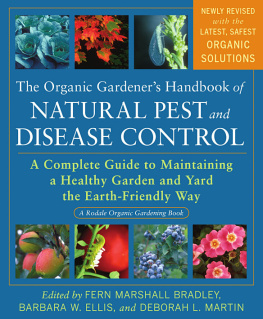Growing and Using Lavender
Patti Barrett
Lavender
What could be more delightful than a row of lavender in the garden or a big pot of lavender next to a doorway, delighting all who pass with its heavenly fragrance? The different lavenders offer much in varied growing habits, versatility in the garden, and a variety of uses when harvested. Many people grow lavender just for its lovely scent, which lasts for a long time once dried; others grow lavender for its color both of the blossoms and the foliage which adds a touch of old-time charm to any garden or container planting.
Lavender is the best known of the fragrant herbs and has been loved and treasured for centuries. The Romans and North Africans used lavender to scent the water in public baths. Lavender was even found in the traveling kits of Roman legions and was used as a disinfectant. This use carried over into medieval times and up through today. The streets of 19th century London were full of girls selling nosegays of lavender and violets.
The lavender name comes from the Latin lavare, to wash, indicating its use both in baths and for clothes. Our word laundress comes from lavandre. In 1579, Langham wrote [add] lavender in water, wet thy shirt in it and dry it again and wear it.
Most lavenders are natives of the Mediterranean region, the islands of the Atlantic, Asia Minor, and India, but they are now grown all over the world. There are 28 known species. The most common are divided into two types: hardy lavenders, inclusive of English lavender (Lavandula angustifolia and cultivars), and tender lavenders, inclusive of French lavender (Lavandula dentata).
Lavenders are easy to grow and care for in the garden, and the flowers with their redolent oils are so habit forming that once you start growing this fetching plant you cannot get enough. The few plants of lavender you start with will soon expand until you are experimenting with many different varieties and have lavender tucked into every extra space.
Lavender has the double delight of sharing its fragrance in midsummer and again in the winter when the lingering scent will bring a touch of warmth to the coldest day.
Types of Lavender
Lavender has many varieties of varying degrees of hardiness. In places like California it is possible to grow many tender species of lavender, whereas in the northeastern United States these tender plants will not make it through the winter and must be treated as annuals (replanted each spring). Some of the hardier varieties will make it through the colder weather with protection, up to and including Zone 4, but if its a hard winter with little snow cover even these hardy plants may not last. It is a good idea to experiment with a few varieties, seeing which work best where you garden. In this way you may find some species that you cannot live without and will plant every spring and others that are hardier and will live for many years without replanting.
Hardy Lavenders
Native to the Mediterranean area, hardy lavenders are sometimes known as English lavenders. They are well-suited to English climate conditions and like the long hours of summer daylight without excessive heat. All of the hardy lavenders have gray foliage and flowers arranged in a spike. The flowers are generally lavender in color.
Hardy lavenders are considered perennials though they can be grown as annuals in areas where they will not winter-over well. They dont grow quite as tall as the tender lavenders (see page 7) and they flower only once a year. Some of the worlds finest oil of lavender comes from the flowers of these plants. This oil is very intense in fragrance it is from these plants that we get the lavender oil that is distilled into perfume.
These garden lavenders can live through the winter in Zones 5 through 8. They are mostly shrubby plants and have narrow gray leaves. The old plants can look good throughout the winter as they sit in the garden with their woody stems. New growth is more green than gray.
The narrow leaves of different varieties vary in size on different parts of the plants, and some flower spikes are tapered while others are blunt. The stems that carry the flowers are square, rise above the foliage, and harden after the plant goes to seed.
Some of the varieties in this group include:
Dwarf Munstead,Lavandula angustifolia Dwarf Munstead
This cultivar, named after gardener and garden writer Gertrude Jekylls home in England, is the earliest to bloom, showing flowers in the second year from seed. Its flower spikes are a true lavender color, and the two-lipped flowers are closely packed together at the ends of the stems. It is a low-growing, compact bush with many heads of lavender-blue flowers growing on stems that are about 4 inches in length. A popular variety, Munstead does well in garden beds or can be planted in containers.
Folgate Blue,Lavandula angustifolia Folgate Blue
Folgate Blue has a growing habit similar to Dwarf Munstead, but has bluer flowers and grows into a slightly larger bush.
Grey Hedge,Lavandula angustifolia Grey Hedge
Grey Hedge is a taller variety than Dwarf Munstead or Folgate Blue, with silver-gray foliage. The flower spikes are thin and pointed, and the flowers are mauve.
Hidcote Purple,Lavandula angustifolia Hidcote Purple
Known for its dark purple spikes, which can be striking in a garden setting, Hidcote Purple grows nearly 24 to 30 inches high and has lovely long blossoms.
Old English,Lavandula angustifolia Old English
Leaves on Old English are broader and greener than those of Grey Hedge. It has narrow, mauve-colored flower spikes.
Seal,Lavandula angustifolia Seal
A tall plant that can reach 3 feet in height under the right growing conditions, Seal is a free-flowering plant with very long stems. The leaves are gray-green and flowers a blue-mauve. It can bloom for extended periods of time, up to four months, in gardens where it thrives.
Twickel Purple,Lavandula angustifolia Twickel Purple
Twickel Purple is unusual in that its spikes grow in a fan formation. It is smaller than Hidcote Purple with long, deep mauve flower spikes.
Broad-leafed Lavender,Lavandula latifolia
This is a much broader-leafed plant that is less free-flowering than those above. It has received the most attention commercially because of its fragrant oil. The foliage of Lavandula latifolia is a clear gray color and slender. Branched stalks carry flower spikes similar to those of many lavenders, although they arent as showy as most. In France, Lavandula latifolia is also known as aspic lavender, said to be a name that refers to a belief that small poisonous snakes lived in the plant. But it may be more likely that the name comes from the word espic meaning spike.
Dutch Lavender,Lavandula x intermedia
Dutch lavender is a cross between Lavandula angustifolia and Lavandula latifolia. It has narrower leaves than the latter and is broader than the former. The flowers are in long, branched spikes. These plants bloom later than the low-growing lavenders and tend to have a good strong scent.
Pink Lavender,Lavandula angustifolia Rosea
Pink lavender has about the same growth characteristics as Folgate Blue, upright with narrow leaves. Its flowers, as its name describes, are a light pink that stand out well against the silver-gray foliage.


